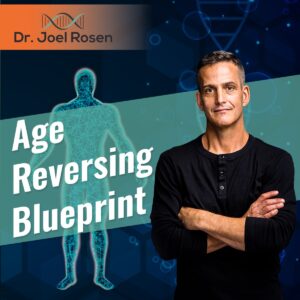
The quest for eternal youth has been a part of human history for centuries, from ancient mythologies to modern-day science fiction. Today, this dream is closer to reality than ever before, thanks to groundbreaking research from Harvard and MIT. The two prestigious institutions have developed a new chemical method that promises to reverse aging, potentially transforming the future of medicine and human health.
Understanding Aging and Its Implications
Aging is a complex biological process that affects all living organisms. It is characterized by the gradual decline of bodily functions, increased susceptibility to diseases, and ultimately, death. Scientists have long sought to understand the mechanisms behind aging to find ways to slow it down or reverse it.
The Science Behind Aging
At the cellular level, aging is influenced by several factors, including genetic mutations, oxidative stress, and telomere shortening. Telomeres, the protective caps at the ends of chromosomes, shorten with each cell division, leading to cellular senescence or the loss of a cell’s power of division and growth. Additionally, the accumulation of damaged proteins and the decline in cellular repair mechanisms contribute to the aging process.
Harvard and MIT’s Breakthrough
The new chemical method developed by researchers at Harvard and MIT targets these fundamental aspects of aging. This innovative approach focuses on rejuvenating cells, restoring their youthful functions, and extending their lifespan.
The Role of NAD+
One of the critical components of this breakthrough is the molecule nicotinamide adenine dinucleotide (NAD+). NAD+ is vital for cellular metabolism and plays a crucial role in DNA repair, gene expression, and maintaining cellular health. However, NAD+ levels decline with age, contributing to the aging process.
Boosting NAD+ Levels
The researchers discovered that by boosting NAD+ levels in cells, they could significantly delay the onset of age-related diseases and improve overall cellular function. They developed a chemical method to increase NAD+ production in the body, effectively reversing some of the aging processes.
Sirtuins Activation
Another crucial element of their research involves sirtuins, a family of proteins that regulate cellular health and longevity. Sirtuins are activated by NAD+ and are known to improve DNA repair, reduce inflammation, and enhance metabolic efficiency. By increasing NAD+ levels, the researchers were able to activate sirtuins more effectively, promoting cellular rejuvenation.
The Implications of This Breakthrough
The potential implications of this age reversal breakthrough are profound. Here are some of the key areas that could be transformed by this discovery:
Healthcare and Medicine
This new method could revolutionize healthcare by providing new treatments for age-related diseases such as Alzheimer’s, Parkinson’s, and cardiovascular diseases. By targeting the root causes of aging, these treatments could improve the quality of life for millions of people and reduce the burden on healthcare systems.
Increased Lifespan
If the findings from Harvard and MIT’s research can be successfully translated into human treatments, it could lead to a significant increase in human lifespan. People could live healthier, more productive lives well into their later years, changing the dynamics of society and the economy.
Ethical and Social Considerations
While the prospect of reversing aging is exciting, it also raises several ethical and social considerations. Questions about accessibility, the potential for overpopulation, and the impact on social structures will need to be addressed as this research progresses.
Moving Forward
The journey from laboratory research to practical, widely available treatments is a long and complex one. The researchers at Harvard and MIT are optimistic about the potential of their findings but acknowledge that more work is needed to understand the full implications and ensure the safety and efficacy of their methods.
Clinical Trials
The next step involves extensive clinical trials to test the safety and effectiveness of these treatments in humans. These trials will be crucial in determining whether the promising results seen in the laboratory can be replicated in real-world scenarios.
Collaboration and Funding
Continued collaboration between research institutions, pharmaceutical companies, and funding bodies will be essential to accelerate the development and deployment of these age-reversal treatments. Public and private investment in this research could bring about a new era of medicine focused on not just treating diseases but preventing them at their root cause.
Conclusion
Harvard and MIT’s new chemical method for reversing aging marks a significant milestone in the field of biomedicine. By targeting fundamental aspects of the aging process, this breakthrough holds the promise of extending healthy human lifespan and transforming the way we approach aging and age-related diseases. As research progresses, it will be crucial to navigate the scientific, ethical, and social challenges to ensure that the benefits of this discovery are realized for all of humanity.



